A while ago, you read about ice town, the airport, right in front of our station. Do you remember what happens there and where those planes go?
Before that you read about Mark and his weather balloons and the French team with their balloons. Do you remember what the purpose of those balloons was?
While those planes and balloons have interesting destinations, the balloons from “Big Balloon City” or the Long Duration Balloons, drift off to potentially even more interesting places. This realm of gigantic balloons is a collection of 20 or so amazing structures on the permanent ice sheet in front of Scott Base. Just like some of the creatures in the water below the ice, many of the houses, vehicles, and the balloons themselves are gigantic. In fact the balloons are the largest sealed balloons on earth and they will head to deep space! Yes – outer space! Passenger jets fly at about 30,000 feet and these balloons fly four times higher - at about 110,000 to 120,000 feet above earth! What could you see from up there? What do they learn from this altitude?
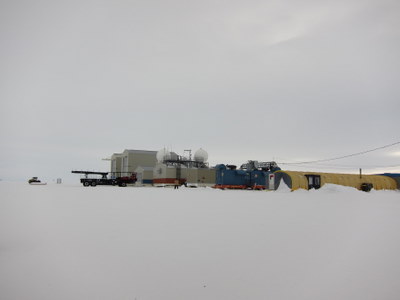
A few weeks ago, I met up with Anne del Vera, a woman who skied from the coast of Antarctica by the Weddell Sea to the South Pole in 1992. In 67 days she and her team of 3 women skied 678 miles – without dogs and without men, towing 250 pound sleds each.
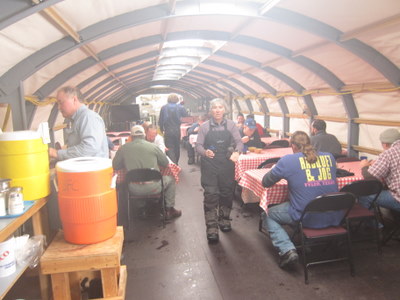
Anne introduced my teacher colleague Peggy and me to her group of balloon launchers and scientists and then we hopped on a shuttle. Twenty minutes later the mirage turned to reality as the city on the ice loomed larger and larger. The next few hours went by like a whirlwind as we saw the biggest doors in Antarctica, test-drove one of the biggest tractors, sat in one of the oldest tractors, saw a gigantic telescope, and got a sneak preview of these impressive balloons and their precious science experiments that are headed out to space.
Before we got into the balloons, we were distracted by rumors of a lost penguin.
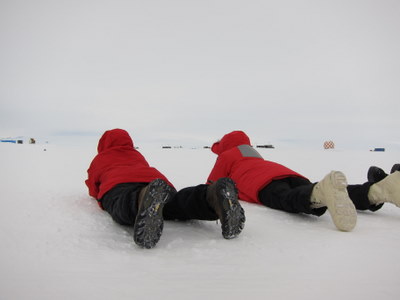
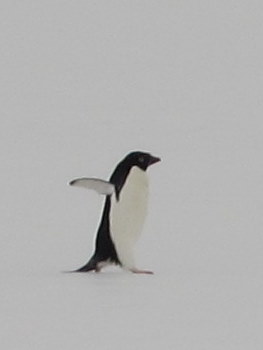
After our little penguin visitation, we headed to the first building - the payload hangar.
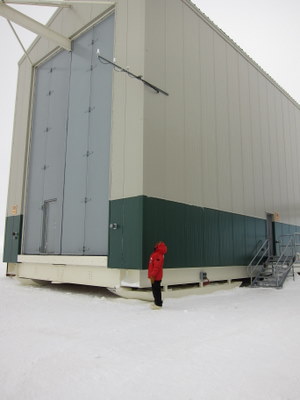
Here we met one of the people in charge of the Balloons, Dave Sullivan, who told us a bit about his program. His program, the Columbia Scientific Balloon Facility (CSBF) (http://www.csbf.nasa.gov/antarctica/ice1011.htm) is part of NASA and they launch, track, and recover the balloons and their science experiments. Though they are based in Texas, they launch balloons in Australia, Sweden, New Mexico and Antarctica. They’ve been launching balloons in Antarctica for about 30 years and this year they hope to launch 3 balloons.
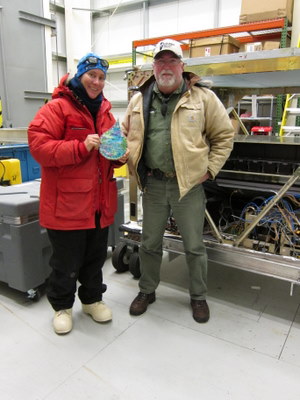
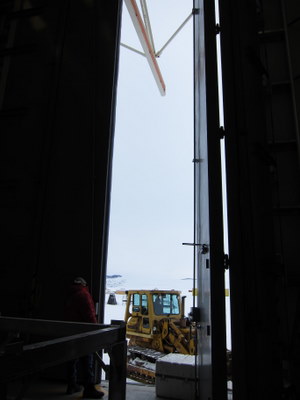
The launching of a balloon takes a lot of preparation. First these Ultra-Long Duration Balloons are made by “little ladies” at an Aerostar plant in Texas. These ladies have the patience and temperament for the delicate and precise task of sewing together the balloons. As thin as plastic wrap, the balloons can withstand tears, pinholes, and harmful UV rays. Weighing about 4,740 pounds, they are a whopping 226 feet tall and, fully inflated, their volume is 18.35 million cubic feet – the size of a full football stadium. Imagine a football stadium taking off and flying up in front of you! 27.5 miles of cable, made of one of the strongest materials on earth, Zylon, encircle each balloon. Though expensive, they are 1/100 the cost of a satellite, which is the other way to get the same information. The other benefits of launching balloons rather than satellites is that graduate students can handle these and learn from this whole experience as it is not as expensive as the satellites. Furthermore, launching these balloons help the technicians figure out what happens to their parts out in space. Do these benefits convince you of their need?
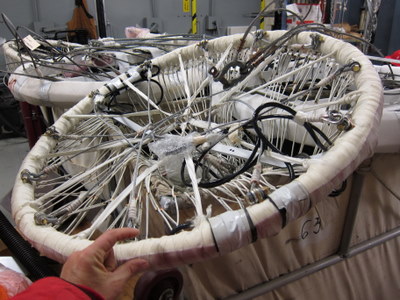
These balloons get flown to the US in big boxes and then the launching campaign starts in earnest.
Derrick, one of his workers, said it takes about two years of on-the-job training to become a skilled balloon launcher as every crew member learns all parts of the job. The balloon launchers are a group of people who consider themselves family as they spend more time with each other than their families.
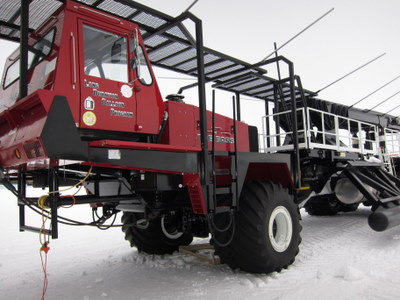
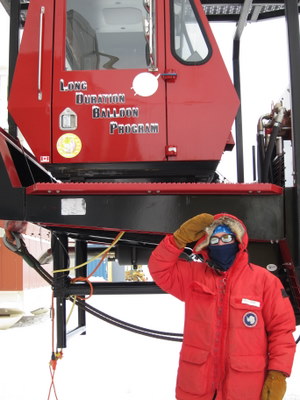
It takes about two months for David’s crew of 14 to set up, launch, monitor, and recover each balloon. The launching day itself could last 24 hours – depending mainly on weather conditions. The balloon takes about an hour to inflate and, once launched, reaches its cruising altitude in about 2 hours. While balloons in other parts of the world are restricted by population and restrictions to only flying for about 2 to 4 days, in remote, uninhabited Antarctica they can fly for 15 days or more. This makes it very cheap to fly balloons here and, in fact, David has 10 years’ worth of science projects lined up, waiting to head up into space.
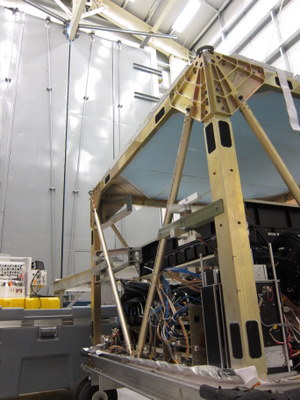
This year there are four science groups involved with the balloons. I was fortunate to be able to talk to one group called, BLAST (Balloon-borne Large-Aperture Submillimeter Telescope) http://blastexperiment.info/, that is attaching a huge telescope on the bottom of their balloon. They will be sending this to a height of above 99.7 percent of the Earth’s atmosphere. There they will take pictures of space to learn more about the formation and evolution of stars, galaxies and clusters.
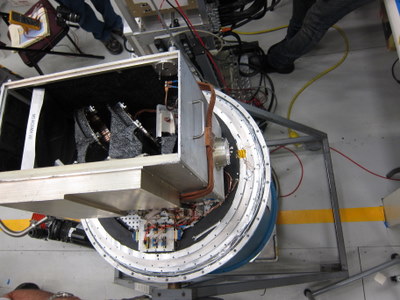
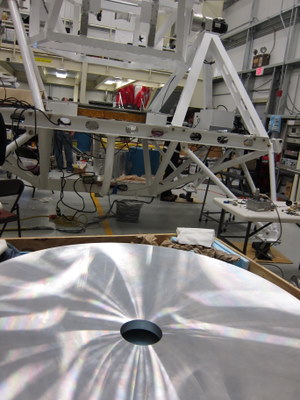
Mark Devlin, the P.I. on the project, gave us a tour of his telescope and he kindly adopted a WATER DROP from Mr. Eccley’s Marina Biology Class as a passenger. Will we get it back? What parts of space will it have seen? We’ll see.
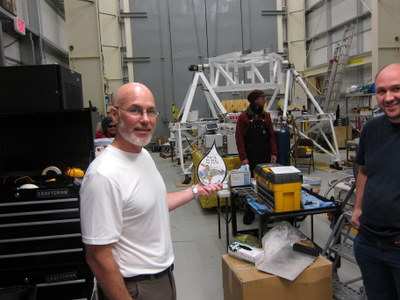
Mark was in Antarctica five years ago on another BLAST mission when they took a similar telescope to 120,000 feet above Antarctica so it could also fly above the atmosphere to see the distant Universe at wavelengths nearly unattainable from the ground (0.25 mm, 0.35mm. and 0.50mm wavelengths). Optical telescopes on land cannot see these parts of our universe as dust absorbs their light. As Mark states, in 2006, they “measured everything, from thousands of small clouds in our own galaxy undergoing star formation to galaxies in the Universe when it was only a quarter of its present age”. According to their press release, “in one epic 11-day balloon flight, BLAST found more than 10 times the total number of submillimeter starburst galaxies detected in a decade of ground-based observations.” I have seen some of his beautiful pictures with thousands of white dots which are all young galaxies undergoing this star formation. When you see this, you really wonder. What else is out there?
So with 1/100 the cost of a satellite and with an overwhelming set of data obtained in an incredibly short span of time, this group has already contributed enormously to our understanding of space. What will this year’s 10-day voyage show the world? The balloon is set to launch around December 20 and I wish Mark and his team all the best!
While we dreamed about distant galaxies and balloons, we ended our visit to this gateway to space with a tour of the vehicles involved in maintaining this city on the ice.
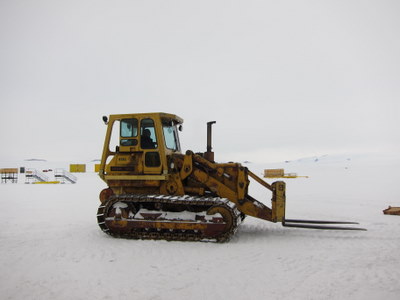
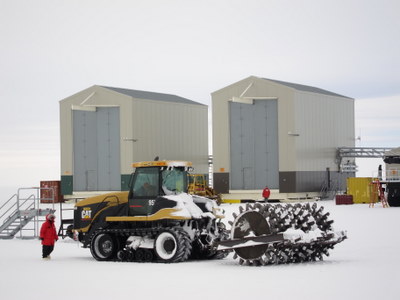
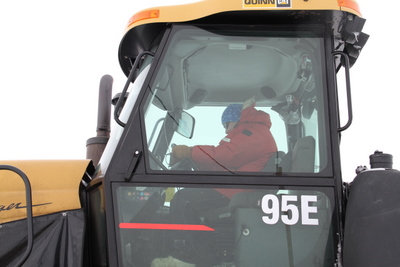
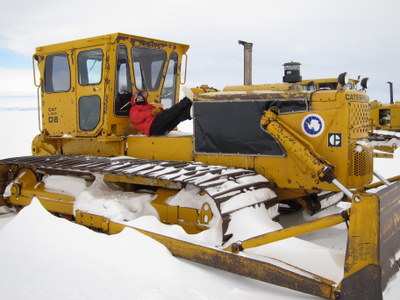


Comments